Nothobranchius rachovii
Bluefin Nothobranch
Classification
Order: Cyprinodontiformes Family: Nothobranchiidae
Distribution
Described from close to the city of Beira, Mozambique and for many years thought widely-distributed between the Kruger National Park, South Africa to the Kwa-Kwa River north of the Zambezi delta.
Populations from the south and north of this range exhibiting differences in colour pattern and morphology have now been described as N. pienaari and N. krysanovi, respectively, meaning N. rachovii sensu stricto is restricted to the area between the lower Pungwe and Zambezi river basins in eastern Mozambique.
Habitat
Inhabits ephemeral, water-filled depressions, pools and swamps mostly located in lowland floodplains. Water levels in these seasonally-variable habitats typically decrease during the dry season and eventually become completely dessicated for several months each year. PH values are typically 6.0 – 7.0.
Aquatic plant species include Nymphea, Ottelia, Lagarosiphon and Utricularia species with common sympatric fishes including the congeners N. kadleci and N. orthonotus plus Clarias gariepinus, Ctenopoma multispine, Protopterus annectens and unidentified ‘Barbus‘ spp. Some habitats are apparently used for low intensity, subsistence rice cultivation.
Maximum Standard Length
50 – 55 mm.
Aquarium SizeTop ↑
Unless isolated temporarily for spawning purposes even a single pair should be offered an aquarium with base dimensions of 45 ∗ 30 cm or more.
Maintenance
This species does not require peat although peat moss is often used as a spawning medium.
Water Conditions
Temperature: 20 – 24 °C
pH: 6.0 – 7.5
Hardness: 54 – 179 ppm
Diet
A natural micropredator meaning small live or frozen foods such as Daphnia, Artemia and chopped bloodworm should form the basis of the diet.
Sexual Dimorphism
Males grow larger and are far more colourful than females.
Reproduction
When its natural habitats become dessicated during the dry season the adult fish die, leaving fertilised eggs encased within the substrate. These are resistant to dessication and remain there until the rains return some 5-6 months later at which point the fry hatch and grow very quickly with sexual maturity reached at around 3 weeks of age.
Typical lifespan in the aquarium is 6-12 months and eggs should be stored at a temperature of 70-77°F/21.1-25°C for 5-7 months before being wetted.
NotesTop ↑
There exists an aquarium strain which is apparently derived from an import made by Roloff in 1958 while other collections are generally labelled with some form of code in order that they can be told apart, thus limiting the possibility of hybridisation.
Examples include ‘Beira 1998’ in reference to a commercial collection made in that area during 1998 and MOZ 99/1, MOZ 99/2, MOX 99/3, etc. in which ‘MOZ’ represents ‘Mozambique’, ’99’ the year of collection (1999) and the latter figure collection locality.
The putative subgenus Zononothobranchius, to which N. rachovii has been assigned in the past, currently contains only the single species known as Nothobranchius rubroreticulatus according to the mtDNA analyses of Shidlovskiy et al. (2010).
References
- Dorn, A., E. Ng'oma , K. Janko , K. Reichwald, M. Polačik, M. Platzer, A. Cellerino, and M. Reichard, 2011 - Molecular Phylogenetics and Evolution 61(3): 739-749
Phylogeny, genetic variability and colour polymorphism of an emerging animal model: The short-lived annual Nothobranchius fishes from southern Mozambique. - Shidlovskiy, K. M., B. R. Watters, and R. H. Wildekamp, 2010 - Zootaxa 2724: 37-57
Notes on the annual killifish species Nothobranchus rachovii (Cyprinodontiformes: Nothobranchiidae) with the description of two new species.

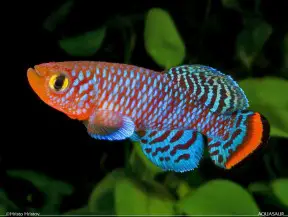
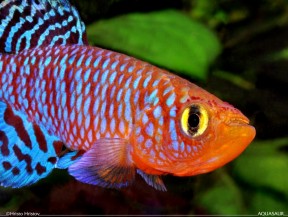
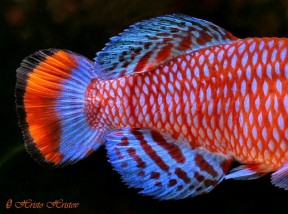
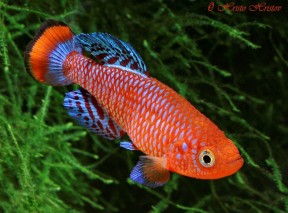
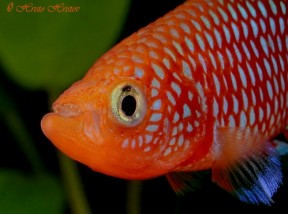
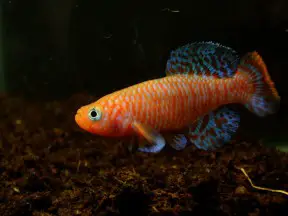

October 13th, 2018 at 7:55 pm
The image shown for “Captive-bred, adult male individual of the ‘Beira 98’ collection.” is incorrect.
That isn’t a ‘Beira 98’ male.
The picture is showing a ‘Beira Airport MZCS 08-96’ male.